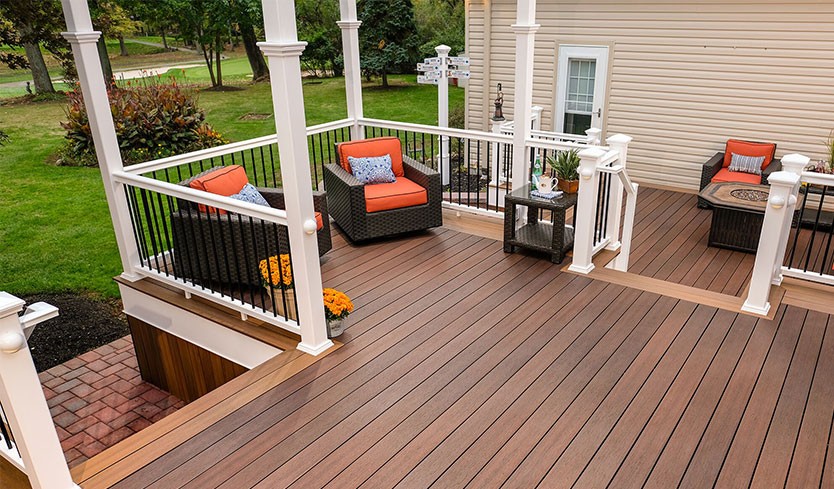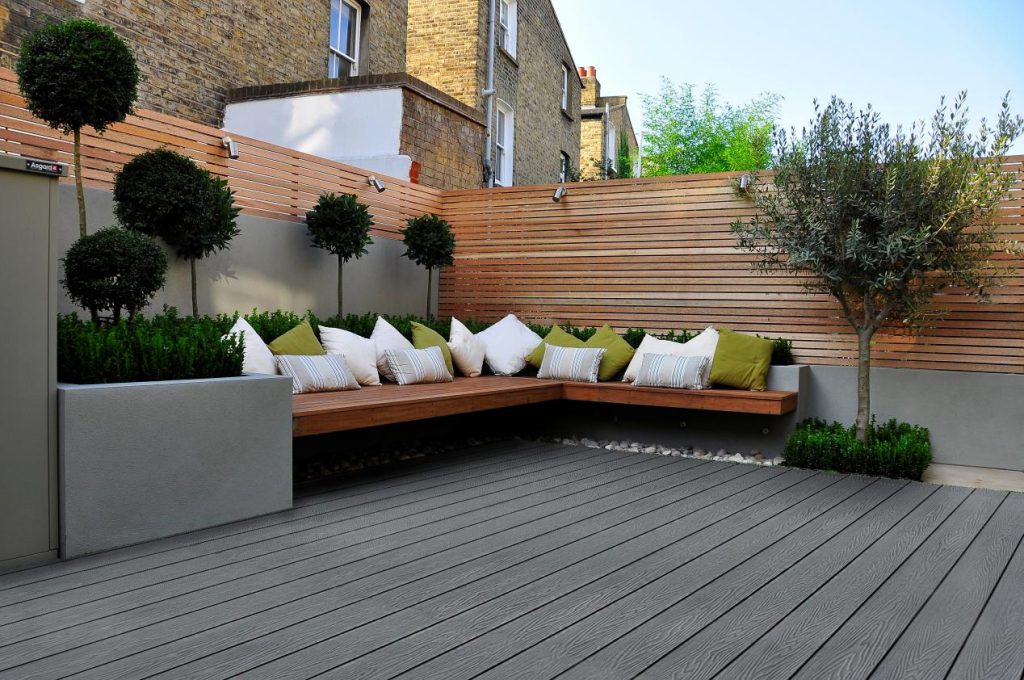Choosing the right composite decking material is one of the most important decisions when building or renovating an outdoor space. Composite decking has become the preferred option for many homeowners, architects, and contractors due to its durability, low maintenance, and modern appearance. However, not all composite decking is created equal. With so many brands, materials, and price levels available, it’s essential to understand the differences before making a choice.
Table of Contents
What Is Composite Decking?
Composite decking is an engineered building material made by combining wood fibers or other natural fillers with plastic polymers. The result is a board that looks and feels like natural wood but offers much greater resistance to rot, fading, and insect damage.
Unlike traditional timber, composite decking does not require painting, staining, or frequent sealing. It’s designed to provide a long-lasting, eco-friendly alternative that can handle harsh weather and heavy foot traffic.
There are several main types of composite decking on the market today, and understanding the differences between them will help determine which one suits your needs best.

Types of Composite Decking Materials
Composite decking can generally be classified into three main categories based on its composition and manufacturing method:
1.1 Wood-Plastic Composite (WPC) Decking
WPC decking is the most common type and typically consists of 60% wood fibers, 30% high-density polyethylene (HDPE) or polypropylene (PP), and 10% additives like color pigments and UV stabilizers.
Advantages:
Natural wood-like appearance
Cost-effective and widely available
Comfortable surface temperature under sunlight
Recyclable and environmentally friendly
Disadvantages:
May fade slightly over time
Slightly lower resistance to scratching compared to capped composite or PVC
WPC decking is ideal for homeowners who want a natural aesthetic combined with durability and easy maintenance.
1.2 Capped Composite Decking
Capped composite decking is essentially an upgraded version of WPC decking. It features a protective polymer shell (often made of PVC or high-performance polyethylene) that covers the core material. This outer layer dramatically improves the board’s resistance to moisture, stains, and fading.
Advantages:
Superior protection from weather and UV rays
More scratch- and stain-resistant
Low water absorption
Long lifespan with minimal maintenance
Disadvantages:
More expensive than uncapped WPC
May have a more synthetic look depending on the brand
Capped composite decking is often chosen for premium outdoor projects, such as pool decks, rooftop terraces, or high-end patios.
1.3 PVC (Polyvinyl Chloride) Decking
PVC decking is made entirely from plastic and contains no wood fibers. This makes it extremely resistant to rot, insects, and moisture. Because it contains no organic material, PVC decking does not warp or split.
Advantages:
100% waterproof
Lightweight and easy to install
Excellent fade and stain resistance
Ideal for coastal or humid environments
Disadvantages:
Can be more expensive
May feel less natural underfoot
Prone to expansion and contraction in extreme temperature changes
PVC decking is best suited for areas with high humidity, heavy rainfall, or poolside installations.
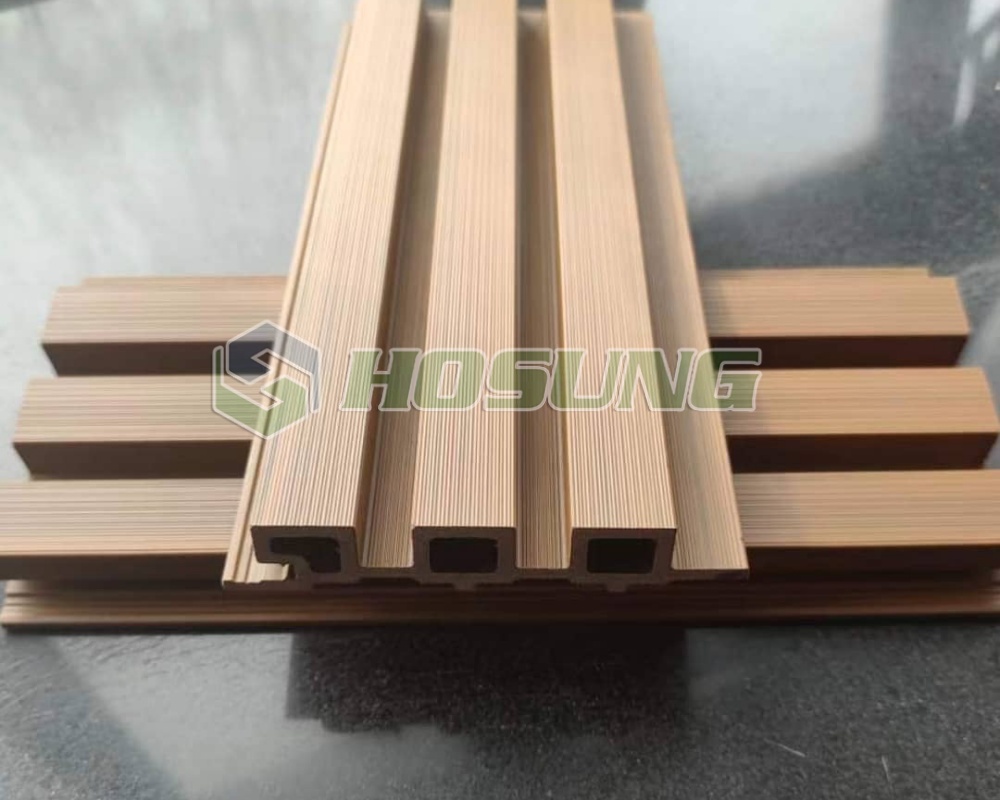
Comparing Composite Decking Materials
Choosing the best composite decking material depends on a variety of performance factors. Below is a detailed comparison of the key aspects to consider.
2.1 Durability
Durability is one of the main reasons people switch from wood to composite decking.
WPC Decking: Offers solid durability and long service life. Resistant to cracking and rotting, but the surface can show minor wear over time.
Capped Composite Decking: Extremely durable thanks to its protective shell. Maintains its appearance for years even under harsh sunlight.
PVC Decking: The most resistant to moisture and mold, making it nearly maintenance-free.
Winner: Capped Composite Decking
2.2 Appearance
Decking aesthetics play a huge role in the overall look of an outdoor space.
WPC Decking: Has the most natural wood grain and texture. Available in many colors that mimic real timber.
Capped Composite Decking: Offers a balance between natural appearance and long-lasting color. Modern embossing technologies make it look almost identical to wood.
PVC Decking: Sleek and uniform appearance, though slightly more artificial.
Winner: Tie between WPC and Capped Composite Decking
2.3 Maintenance Requirements
All composite decking is lower maintenance than wood, but differences exist among materials.
WPC Decking: Requires occasional cleaning with soap and water.
Capped Composite Decking: Very low maintenance — dirt and spills can be easily washed away.
PVC Decking: Nearly maintenance-free, as it’s fully nonporous.
Winner: PVC Decking
2.4 Weather and UV Resistance
Outdoor decking must handle extreme temperatures, direct sunlight, and heavy rain.
WPC Decking: Performs well in moderate climates but may fade slightly over years.
Capped Composite Decking: Excellent UV resistance thanks to the polymer coating.
PVC Decking: Performs best in wet or coastal conditions.
Winner: Depends on climate — Capped Composite for sun, PVC for humidity
2.5 Slip Resistance
Safety is critical, especially for decks near pools or in rainy regions.
WPC Decking: Good grip, especially with textured or embossed surfaces.
Capped Composite Decking: Enhanced slip resistance due to multi-layer coating.
PVC Decking: Often very smooth; requires a textured surface for safe use near water.
Winner: Capped Composite Decking
2.6 Cost and Value
Cost is one of the biggest deciding factors when choosing decking.
WPC Decking: Most affordable option and offers the best value for money.
Capped Composite Decking: Mid-to-high range pricing with superior performance.
PVC Decking: Premium price, often 30–40% more expensive than standard WPC.
Winner: WPC Decking (for cost-effectiveness)
2.7 Environmental Impact
Composite decking was originally created to reduce the need for cutting down trees. Today, many manufacturers use recycled materials.
WPC Decking: Often made from recycled wood and plastic, making it eco-friendly.
Capped Composite Decking: Also uses recycled core materials, but the plastic shell adds complexity to recycling.
PVC Decking: Fully plastic, not biodegradable but recyclable in closed-loop systems.
Winner: WPC Decking
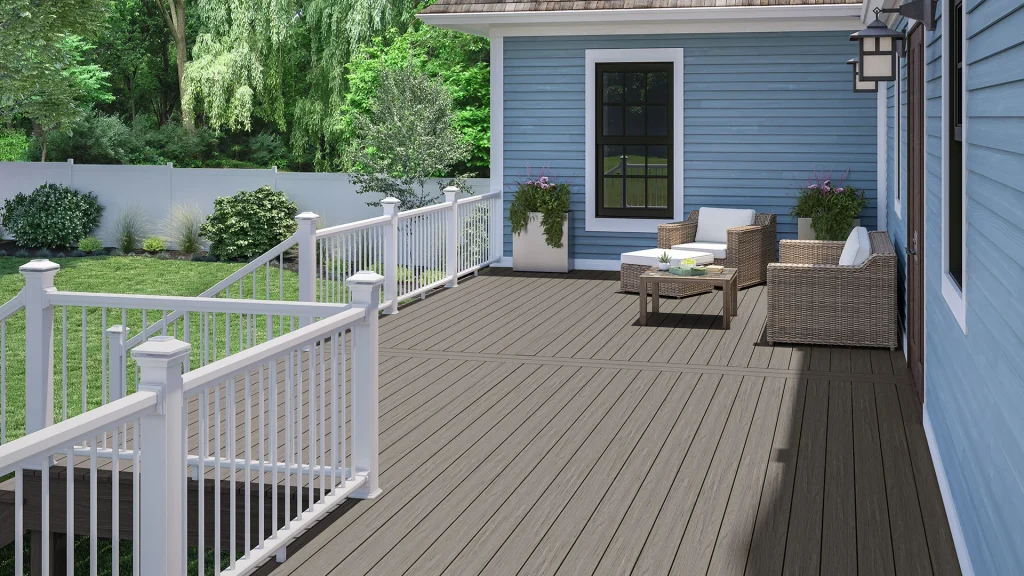
Top Factors to Consider When Choosing the Best Decking Material
When determining which composite decking material is best, consider the following aspects based on your project’s unique requirements.
3.1 Location and Climate
If your region experiences heavy rain or humidity, PVC or capped composite decking will last longer. For dry or mild climates, traditional WPC decking offers great performance at a lower cost.
3.2 Intended Use
For residential patios or gardens, WPC is usually sufficient. For commercial decks, rooftop terraces, or public spaces, capped composite decking provides better long-term durability.
3.3 Aesthetic Preferences
If you prefer a natural, warm wood look, WPC decking provides a more authentic texture. For a modern and sleek finish, PVC or capped composite may suit you better.
3.4 Budget
If you’re working with a limited budget but still want quality, go for WPC decking. For premium projects where long lifespan and color retention matter more, invest in capped composite.
The Evolution of Composite Decking Technology
Over the years, composite decking technology has improved significantly. Early generations of WPC decking sometimes suffered from color fading and surface wear, but modern production processes have largely solved these issues.
New innovations include:
Co-extrusion technology: Adds a protective shell layer for improved stain and fade resistance.
Embossed wood grain finishes: Achieve a more realistic texture and appearance.
UV stabilizers: Prevent color fading under prolonged sunlight.
Fire-retardant additives: Improve safety for outdoor installations.
Modern composite decking offers the perfect blend of beauty, performance, and sustainability — making it an excellent investment for the long term.
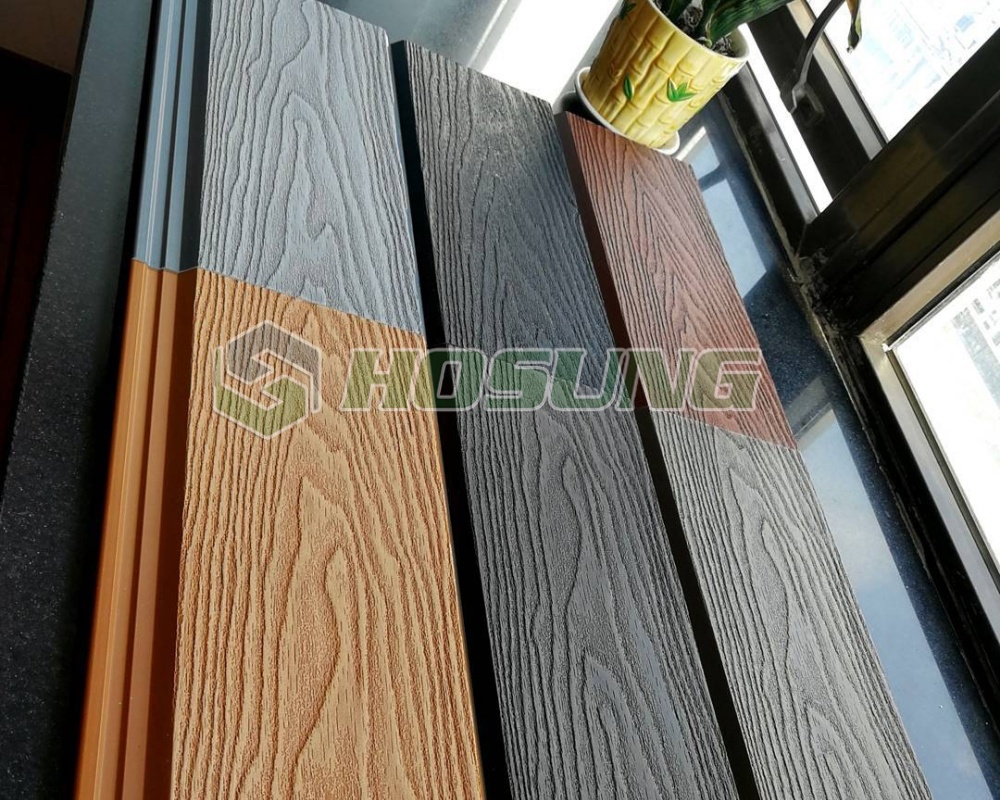
Popular Applications of Composite Decking
Composite decking materials are incredibly versatile. They are used not only for backyard decks but also in a wide range of architectural and landscaping projects:
Residential patios and balconies
Poolside decking
Rooftop gardens and terraces
Boardwalks and public walkways
Commercial outdoor lounges
Outdoor staircases and ramps
Because of their slip-resistant and weatherproof qualities, composite boards have become a go-to choice for both private homes and commercial spaces around the world.

How to Maintain Composite Decking
Although composite decking is low maintenance, regular cleaning helps keep it looking new for years.
Simple care tips:
Sweep regularly to remove leaves and debris.
Wash occasionally with mild detergent and water.
Avoid harsh chemical cleaners or metal brushes.
Remove standing water after rain to prevent staining.
Check the fasteners and edges annually to ensure stability.
Following these basic steps can extend your deck’s life and preserve its color and finish.
The Future of Composite Decking
As sustainability and innovation continue to shape the building materials industry, composite decking will keep evolving. Future trends include:
Recycled and bio-based polymers for greener production
Smart decking systems with integrated lighting or hidden fastening
Enhanced fire- and UV-resistance for extreme climates
Customization options for texture, color, and width
With continued R&D, composite decking will remain a key part of eco-friendly outdoor design for decades to come.
Why Hosung WPC Is a Trusted Choice
Among the many manufacturers of composite decking, Hosung WPC stands out for its consistent quality, advanced production technology, and eco-conscious approach.
Key highlights of Hosung WPC:
Over 20 years of manufacturing experience
High-performance WPC and co-extruded decking with superior weather resistance
Wide range of colors and wood grains
Produced using recycled materials under strict quality standards
Tested for UV, moisture, and impact resistance
Global supply capability for residential and commercial projects
Hosung WPC offers both classic WPC decking for cost-conscious buyers and co-extruded capped decking for high-end applications. The brand combines the aesthetic appeal of wood with the advanced performance of modern composites — making it a reliable and sustainable choice for any outdoor project.
Conclusion: Which Composite Decking Material Is Best?
The “best” composite decking material ultimately depends on your priorities:
For affordability and natural beauty, choose standard WPC decking.
For superior protection and longevity, go with capped composite decking.
For maximum resistance to moisture and mold, PVC decking is unbeatable.
Each material has its own strengths, and understanding them will help you make an informed decision.
However, if you’re looking for a balance of performance, aesthetics, and sustainability — Hosung WPC offers one of the most trusted options in the global market. Whether for a backyard patio or a large-scale commercial project, Hosung WPC decking delivers quality that lasts, year after year.

Conclusion: Composite Decking Clearly Comes Out on Top
After comparing every major factor — durability, maintenance, cost, appearance, safety, sustainability, and lifespan — it’s clear that composite decking is the best choice for most homeowners.
While wood decking offers natural charm, it demands constant maintenance and has a shorter lifespan. Composite decking delivers long-lasting beauty, low upkeep, eco-friendly materials, and excellent return on investment.
If you’re asking which is best, composite or wood decking, the answer is simple:
👉 Composite decking offers the perfect balance of performance, style, and sustainability — the smarter choice for modern outdoor living.


